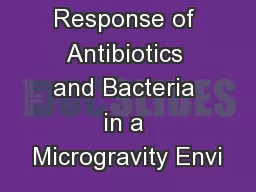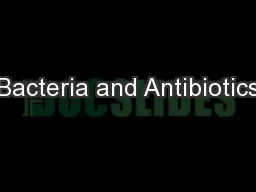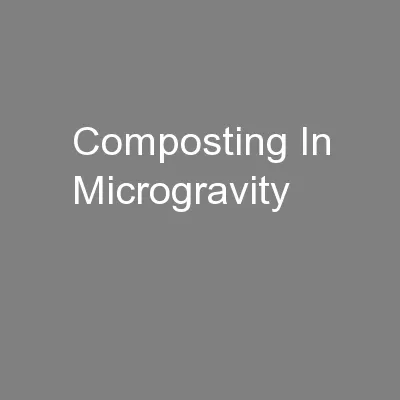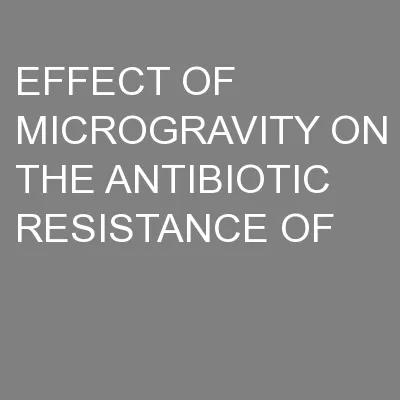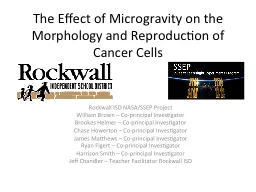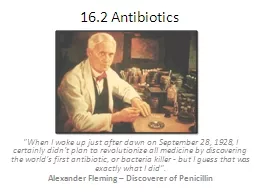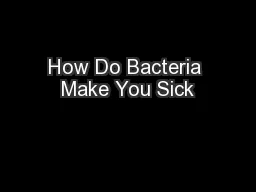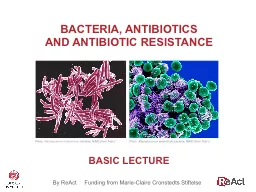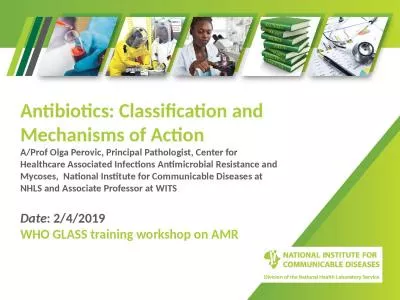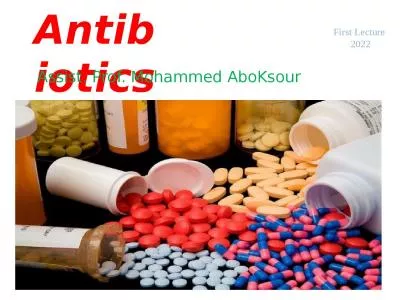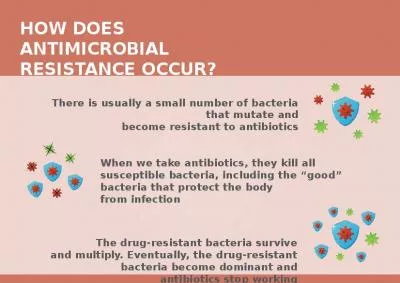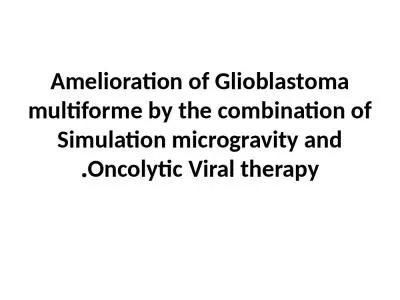PPT-Response of Antibiotics and Bacteria in a Microgravity Envi
Author : olivia-moreira | Published Date : 2017-05-18
SSEP Mission 4 to the International Space Station Response of Antibiotics and Bacteria in a Microgravity Environment CoPrincipal investigators Paxton Ellul Ashley
Presentation Embed Code
Download Presentation
Download Presentation The PPT/PDF document "Response of Antibiotics and Bacteria in ..." is the property of its rightful owner. Permission is granted to download and print the materials on this website for personal, non-commercial use only, and to display it on your personal computer provided you do not modify the materials and that you retain all copyright notices contained in the materials. By downloading content from our website, you accept the terms of this agreement.
Response of Antibiotics and Bacteria in a Microgravity Envi: Transcript
Download Rules Of Document
"Response of Antibiotics and Bacteria in a Microgravity Envi"The content belongs to its owner. You may download and print it for personal use, without modification, and keep all copyright notices. By downloading, you agree to these terms.
Related Documents

